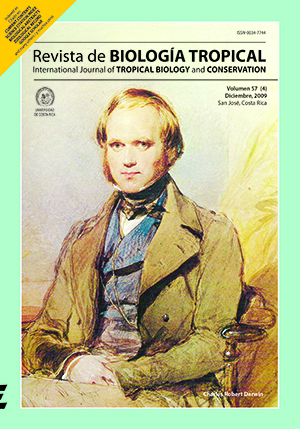Abstract
Wetlands constitute very important ecological areas.The aim of this study was to quantify the soil losses due to fluvial erosion from 2006 to 2008 in two riverbanks under three types of vegetal coverage domi-nated by Haematoxylum campechianum, Dalbergia brownei and Brachiaria mutica, in the Pantanos de Centla Biosphere Reserve, SE Mexico. The relationship between the texture, organic matter and pH of soils and soil losses was evaluated. We used erosion sticks to estimate soil losses in 18 plots (three plots per type, three vegetation types, two riverbanks). Soil loss decreased in this order: H. campechianum>B. mutica>D. browneiindicating that D. brownei scrubland has the most potential to retain soil. The higher erosive impact within H. campechianum sites can be related with the low density of these trees in the study areas, as well as the lack of association with other types of vegetation that could reinforce the rooting of the soil profile. Furthermore, soil losses in H. campechianum sites were dependent on soil texture. The soils under this type of vegetal coverage were mainly sandy, which are more vulnerable to the erosive action in comparison with fine textured soils or soils with higher clay content, like the ones found in D. brownei and B. mutica sites. Soil losses of 100 % in the second year ( B. mutica plots) can be attributed to the distribution of roots in the upper soil layer and also to livestock management along riverbanks. This study recognizes the importance of D. brownei scrublands in riverbank soil retention. Nevertheless it is necessary to consider the role of an entire vegetal community in future research.
##plugins.facebook.comentarios##

This work is licensed under a Creative Commons Attribution 4.0 International License.
Copyright (c) 2009 Revista de Biología Tropical






